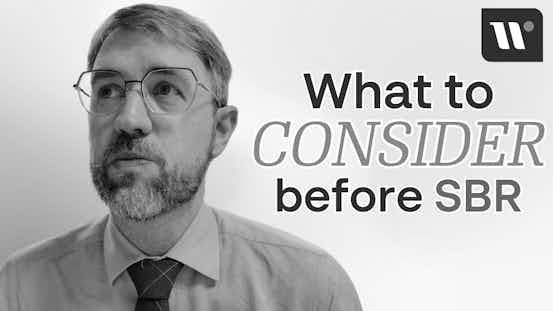A small business was saved from financial hardship through Small Business Restructuring. Brendan Giles, our principal, guides you through the practical impact and path to recovery in a real-life case study. Subscribe to stay up-to-date on the latest insolvency, bankruptcy and finance information from Worrells.
Transcript
Let's finish off with a practical example of how this process can work for a small business. We're going to look at an NDIS provider that Worrells in Western Sydney helped. They had 54 employees and around 250 clients. During COVID, they maintained their staff; they'd done what they thought was the right thing and what the government wanted them to do.
As a result, they'd got a bit behind on their tax and they ended up with a tax debt of around $400,000 to $420,000. They had a few other minor creditors, but nothing significant compared to the ATO debt. They entered into a payment plan with them at $17,000 a month, and that just wasn't a viable plan for them. They just couldn't afford that.
The business had somewhere between $12,000 and $15,000 of free cash flow a month, so it just didn't have the money to pay $17,000 every month. It wasn't an option for them. So what they came to us originally to do was to put the company into liquidation. They thought, "We just can't proceed like this. We're going backwards. We need to wind it up." But they were a perfect candidate for small business restructuring.
The way we dealt with that was putting forward a proposal to the ATO based upon a cash flow forecast and an estimate of what the business could afford over the future. The proposal was ultimately put to the creditors, which was a payment of $120,000 made by way of $10,000 a month for 12 months. That meant the company wasn't tied up for too long, and it was an affordable amount.
They still had a bit of wiggle room based on free cash flow in their forecasts to enable them to make sure they could make those payments, even if something went a little bit wrong and they fell short on what they were projecting. That proposal was accepted by the ATO and the other main creditor, and that plan has recently completed.
So, they completed their 12 months of payments, they've made all of them on time, and we've made a distribution to the creditors of just over 30 cents in the dollar, which is not the best return from the perspective of "I want all my money," but an excellent return in an insolvency situation and a much better return than creditors would have got if this company had gone into liquidation. And on top of that, we got to save 54 jobs.
Those jobs continue, those people continue with employment, and the customers of that NDIS provider don't get the interruption that would have happened if that business had ceased trading. So, it's a practical example of how the process can benefit everybody. The creditors got more than they would have otherwise got, the business gets to continue and the employees get to keep their jobs. It's a win-win-win situation in this case.

